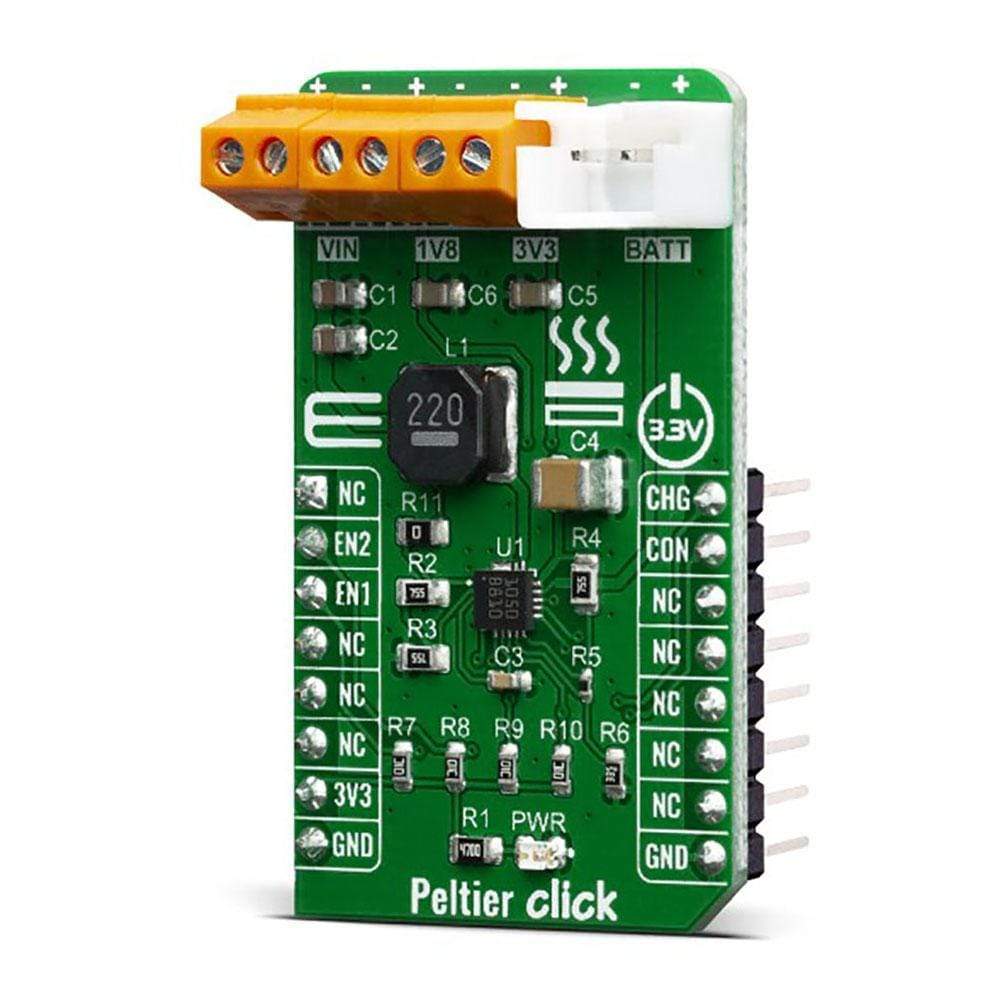
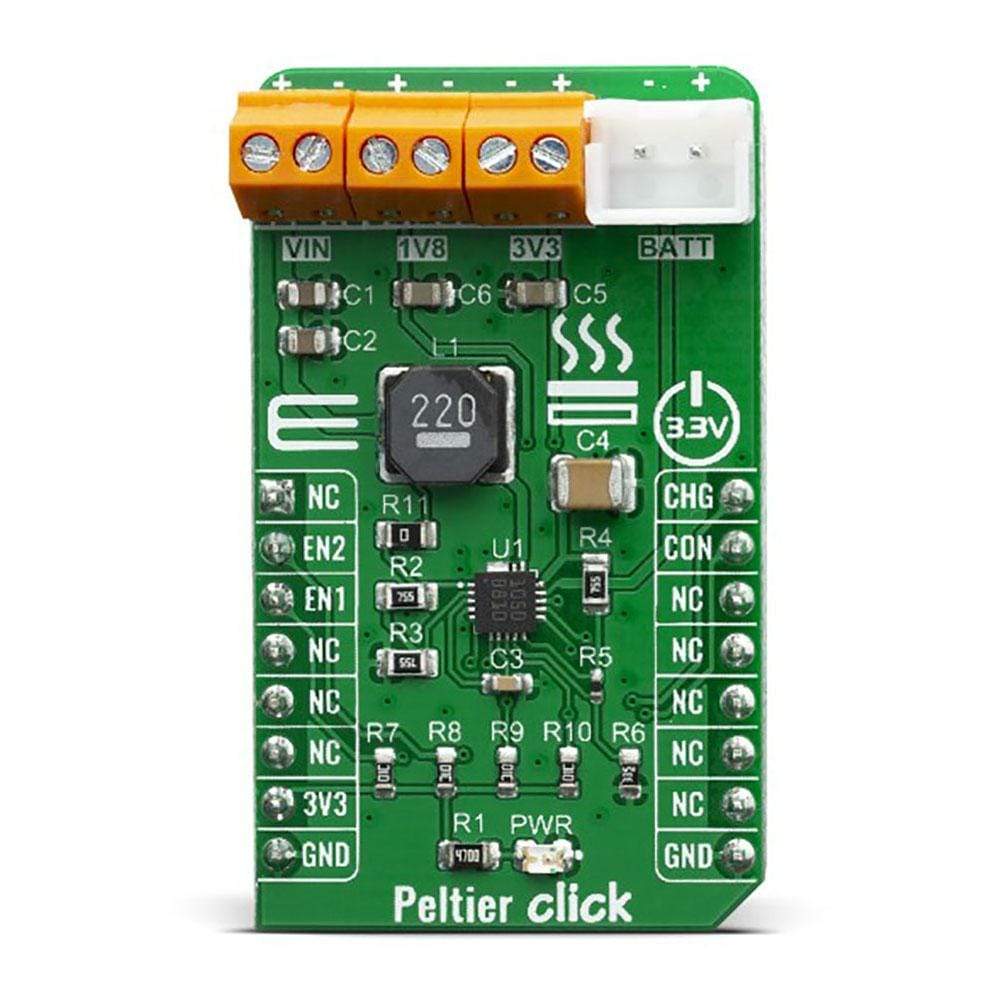
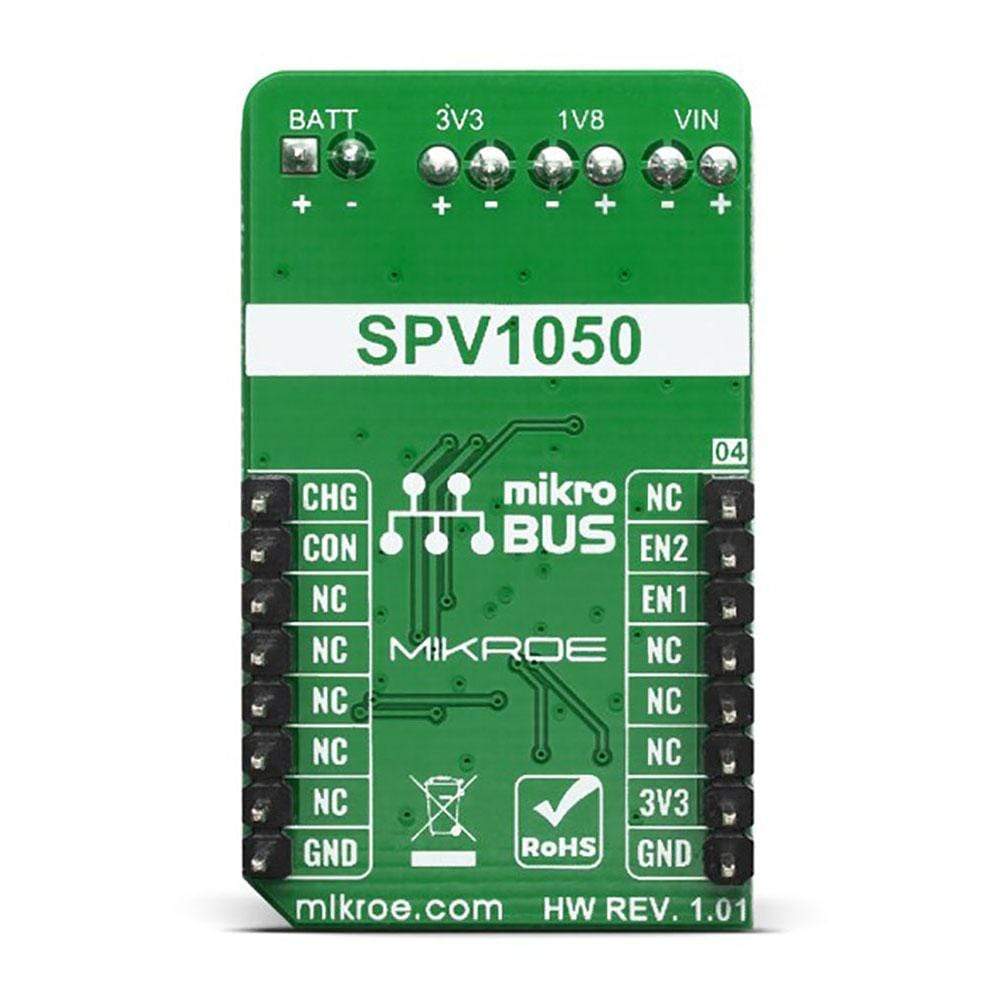
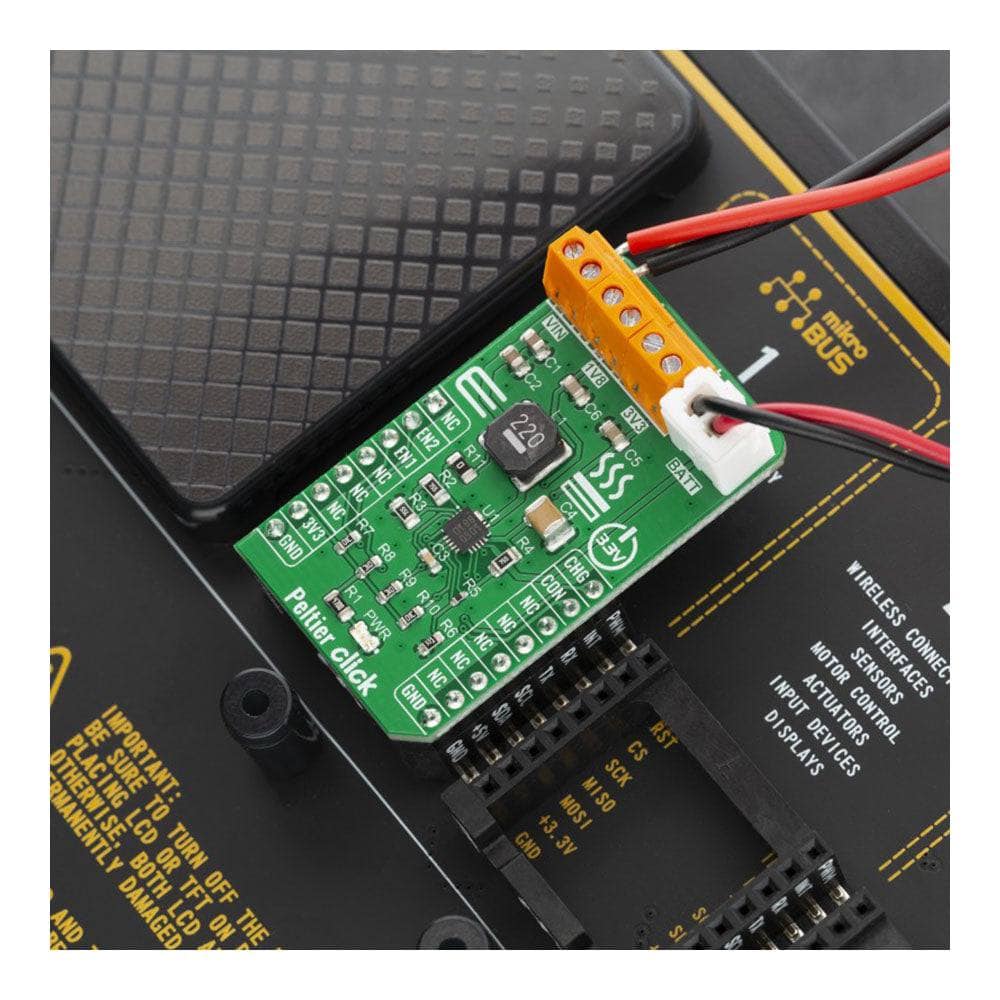
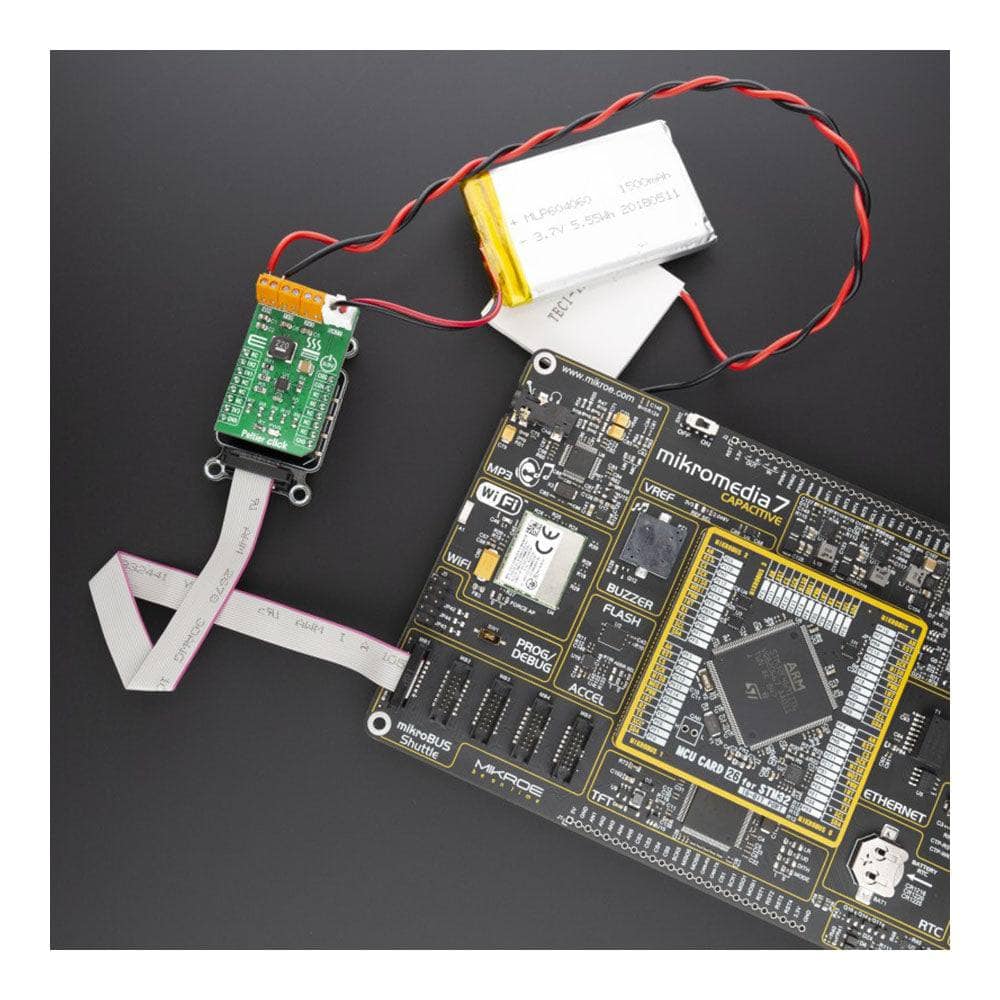
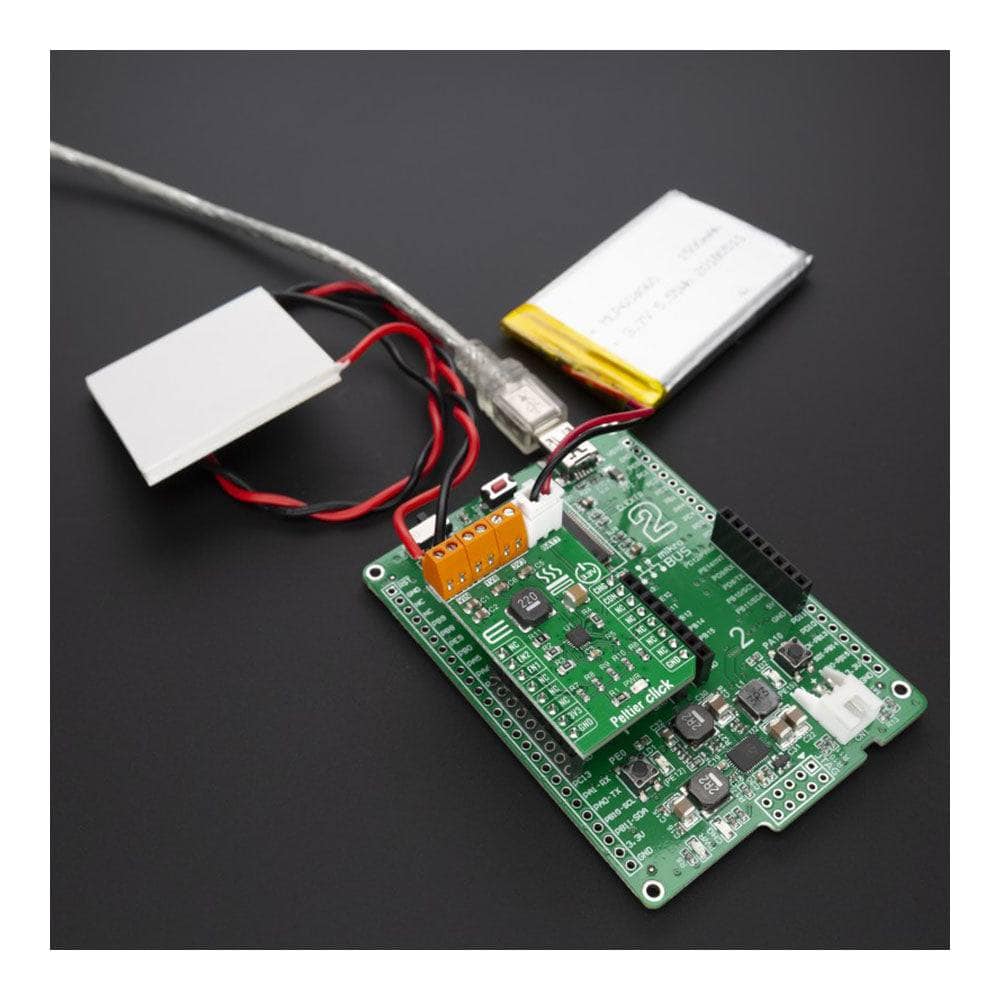
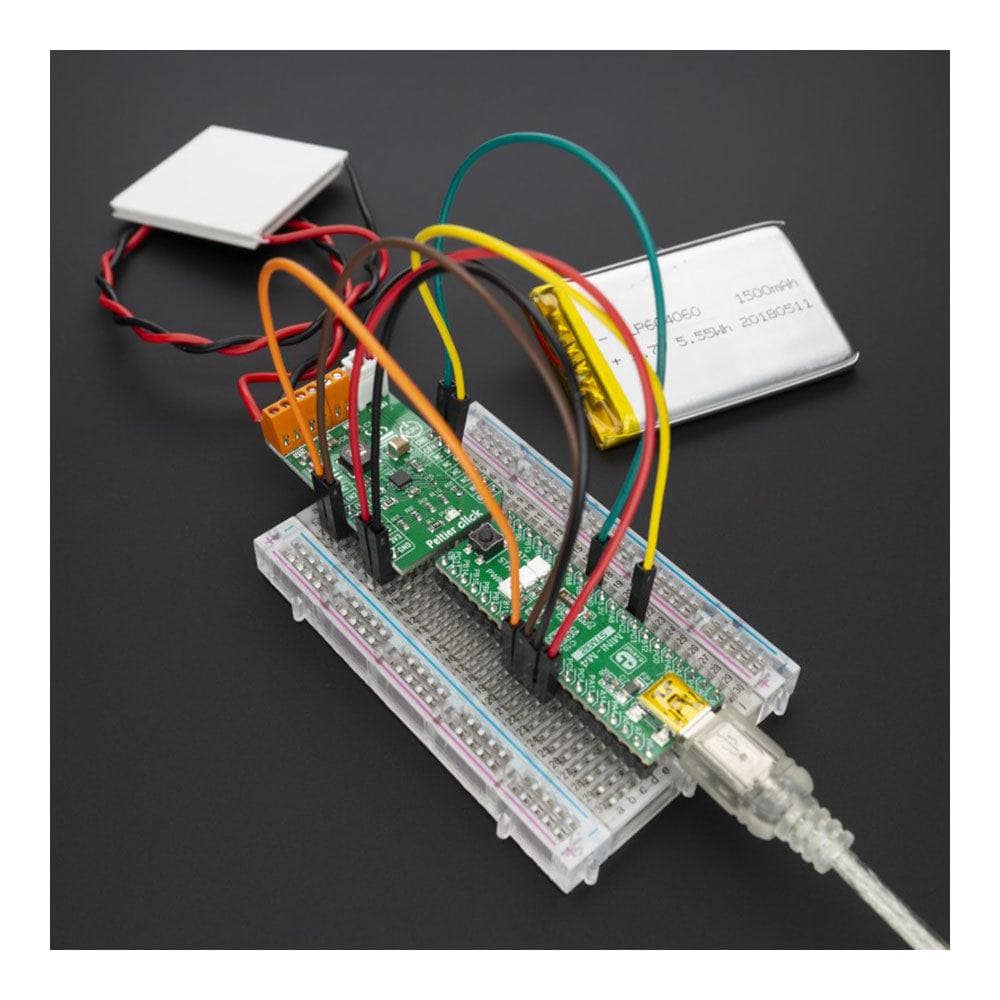
Key Features
Overview
The Peltier Click Board™ uses the SPV1050, an ultralow-power energy harvester and battery charger from STMicroelectronics. The Peltier Click Board™ can charge lithium batteries using a thermoelectric energy harvesting device (TEG). A TEG converts heat directly into electrical energy according to the Seebeck effect. It can be used for various applications such as WSN, HVAC, building and home automation, industrial control, remote metering, lighting, security, surveillance, wearable and biomedical sensors and fitness.
The Peltier Click Board™ is supported by a mikroSDK compliant library, which includes functions that simplify software development. This Click Board™ comes as a thoroughly tested product, ready to be used on a system equipped with the mikroBUS™ socket.
Note: The Peltier Element is available separately.
Downloads
Das Peltier Click Board™ verwendet den SPV1050, einen Energieerzeuger und Batterielader mit extrem niedrigem Stromverbrauch von STMicroelectronics. Das Peltier Click Board™ kann Lithiumbatterien mithilfe eines thermoelektrischen Energieerzeugers (TEG) laden. Ein TEG wandelt Wärme gemäß dem Seebeck-Effekt direkt in elektrische Energie um. Es kann für verschiedene Anwendungen wie WSN, HVAC, Gebäude- und Heimautomatisierung, industrielle Steuerung, Fernmessung, Beleuchtung, Sicherheit, Überwachung, tragbare und biomedizinische Sensoren und Fitness verwendet werden.
Das Peltier Click Board™ wird von einer mikroSDK-kompatiblen Bibliothek unterstützt, die Funktionen enthält, die die Softwareentwicklung vereinfachen. Dieses Click Board™ ist ein gründlich getestetes Produkt und kann auf einem System verwendet werden, das mit der mikroBUS™-Buchse ausgestattet ist.
Hinweis: Das Peltier-Element ist separat erhältlich.
| General Information | |
|---|---|
Part Number (SKU) |
MIKROE-3814
|
Manufacturer |
|
| Physical and Mechanical | |
Weight |
0.02 kg
|
| Other | |
Country of Origin |
|
HS Code Customs Tariff code
|
|
EAN |
8606018719754
|
Warranty |
|
Frequently Asked Questions
Have a Question?
Be the first to ask a question about this.







